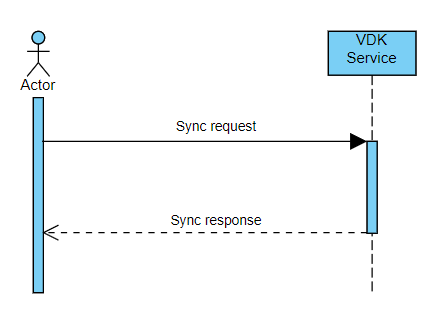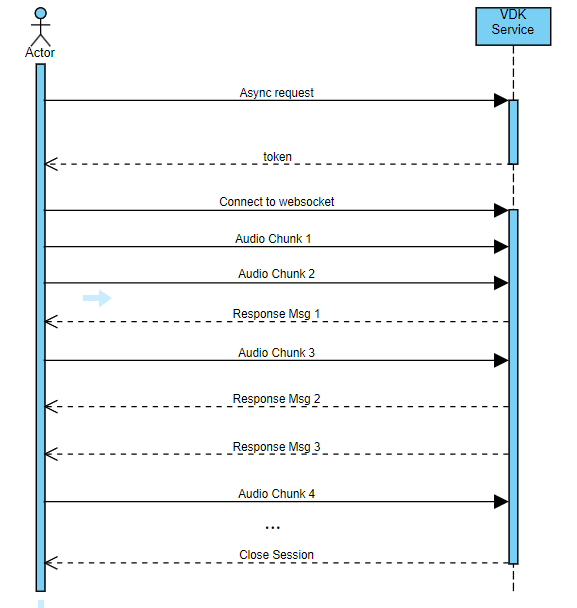VDK Service
What is VDK Service?
The VDK Service offers a streamlined approach for building voice applications. It acts as a runtime environment that executes your voice logic and interacts with our various technologies. This mode allows users to interact with voice technologies using their preferred programming languages and technology stack. Which makes it perfect for those looking to incorporate voice technologies into diverse projects quickly and efficiently.

The VDK Service processes various REST requests from the client application and performs the necessary voice processing. Depending on the nature of the request, a WebSocket session may be required to transfer audio data through a WebSocket connection.
Benefits of Using VDK Service
Simplified Development:
Focus on crafting your voice logic without worrying about infrastructure setup or managing dependencies.Increased Scalability:
VDK Service scales efficiently to handle growing user traffic.
Flexibility:
Integrate diverse technologies seamlessly into your voice application.
VDK Service Request Types: Synchronous vs. Asynchronous
The VDK Service caters to two primary request types, each suited for different scenarios:
Synchronous Requests:
These requests offer a straightforward approach where the client application receives the response directly within the REST API response itself. This is ideal for tasks that require a single, immediate outcome, such as retrieving information or triggering a simple action.

Asynchronous Requests:
Asynchronous requests are better suited for scenarios involving continuous data streams or real-time processing. These requests necessitate a WebSocket session, a specialized protocol that enables bidirectional communication between the client and server. This allows for:Audio Streaming:
Technologies like speech enhancement, voice recognition, and voice biometrics often require continuous audio input for accurate processing. Asynchronous requests facilitate this by streaming the audio data to the VDK Service for analysis.Real-Time Processing:
Asynchronous communication allows the VDK Service to process the streamed data in real-time, providing results as they become available. This is crucial for applications like speech recognition, where the user receives transcriptions as they speak.
Response Messages:
The response message received by the client application can vary depending on the specific technology used within the request. These responses can take different forms:
- Events: Notifications sent by the VDK Service to signal specific occurrences.
- Results: The final outcome of the processing, such as recognized text or a voice biometric score.
- Errors: Messages indicating any issues encountered during processing.
- Processed Audio Data: In cases like speech enhancement, the processed audio stream itself might be returned as the response.
